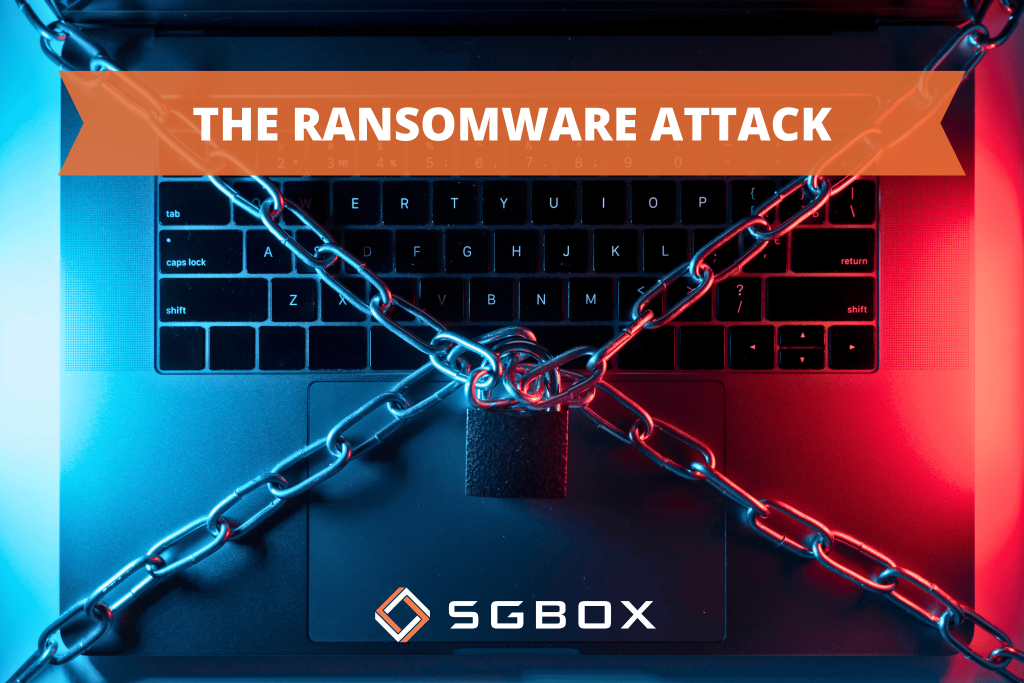The Ransomware Attack

What is Ransomware?
The term “Ransomware” has been increasingly appearing in conversations regarding cybersecurity.
But what does it exactly mean? Ransomware is a form of malware designed to block access to a system or its data until a ransom is paid.
This type of cyber-attack often leverages encryption to make the victim’s files inaccessible, demanding payment to restore access.
The 2025 Clusit Report highlighted how Ransomware is by far the most utilized category of Malware by hackers, due to its higher profitability in economic terms.
Types of Ransomware
Ransomware comes in various forms and types, each with its own modes of attack and consequences.
Here’s a list of the most common types of Ransomware:
- Ransomware Locker: this form of Ransomware completely locks access to the victim’s system, preventing the booting of the operating system or access to files. Users are often presented with a blocking message demanding ransom payment to unlock the system.
- Ransomware Crypto: this type of Ransomware encrypts the victim’s files using advanced cryptographic algorithms. Once the files are encrypted, they become inaccessible without the correct decryption key, which is promised in exchange for ransom payment.
- Ransomware Scareware: this type of Ransomware exploits fear and intimidation to induce victims to pay the ransom. Users may be presented with false security alerts or threats of legal action, attempting to convince them to pay to resolve the alleged issue.
- Ransomware Mobile: this Ransomware variant is designed for mobile devices such as smartphones and tablets. Once the device is infected, Ransomware can block access to user data or encrypt files on the device, demanding payment to restore access.
- Ransomware Doxware: this type of Ransomware threatens to make the victim’s sensitive data, such as photos, videos, or personal documents, public unless a ransom is paid. The threat of disclosure can be particularly damaging to the reputation and privacy of the victims.
- Ransomware as a Service (RaaS): this is a more sophisticated form of Ransomware, where cybercriminals offer infrastructure and technical support to help other criminals conduct Ransomware attacks in exchange for a share of the profits.
How does Ransomware manifest itself?
Ransomware can manifest in various ways, utilizing different techniques to infiltrate victims’ computer systems.
Below are some of the main methods through which Ransomware can manifest:
- Phishing Emails: one of the most common methods used by cybercriminals to spread Ransomware is through phishing emails. In this type of attack, users receive seemingly legitimate emails prompting them to open attachments or click on malicious links. Once the user interacts with the email content, the malware can be activated and begin encrypting the victim’s files.
- Infected Websites: some websites can be compromised by cybercriminals to spread Ransomware. Users might be directed to these sites through malicious links or deceptive advertisements. Once a user visits an infected site, the malware can be downloaded and activated on their device without their consent.
- Software Vulnerabilities: cybercriminals can exploit vulnerabilities in the software installed on victims’ devices to spread Ransomware. These vulnerabilities can be exploited to execute malicious code on the victim’s device, allowing the malware to take control of the system and encrypt files.
- Drive-by Download: this malware distribution technique involves the automatic download and execution of Ransomware without any explicit action from the user. The malware can be hidden in malicious scripts or executable files present on compromised web pages, exploiting vulnerabilities in the browser or installed plugins to carry out the attack.
- Ransomware Worms: some Ransomware variants can spread autonomously across networks, exploiting vulnerabilities in connected devices to propagate from one machine to another. These worms can spread rapidly within corporate or home networks, encrypting files on all reached devices.
What to do in case of a Ransomware attack?
If a company suddenly falls victim to a Ransomware attack, it’s crucial to act promptly and strategically to minimize damage and restore normal operations as soon as possible.
Here are some steps to follow in the event of a Ransomware attack:
- Isolate the infected system: the first action to take is to immediately isolate the infected system or systems from the company network to prevent the spread of Ransomware to other devices and servers.
2. Disconnect Internet connections: disable all internet and network connections to prevent attackers from communicating with the malware and encrypting further files or devices.
3. Contact an IT expert: immediately seek the assistance of an IT expert to assess the extent of the attack, identify the type of Ransomware involved, and develop an appropriate response strategy.
4. Evaluate data restoration options: assess available options for data restoration, such as restoring from recent backups or using decryption tools available online, if applicable.
5. Communicate with staff: promptly inform company staff of the Ransomware attack and the actions being taken to resolve the situation. Provide clear instructions on how they should behave and what precautions they should take to further protect sensitive data.
6. Document the attack: thoroughly document all events related to the Ransomware attack, including suspicious activities preceding the attack, damages incurred, and actions taken to resolve the situation. This information can be useful for future reference and post-incident analysis.
Consequences of a Ransomware attack
The consequences of a Ransomware attack can be devastating for both individuals and companies.
For individuals, it could mean the loss of personal documents, photos, or other important data. For companies, the consequences can be even more severe, with the possibility of losing critical business data, experiencing disruptions to operations, and suffering reputational damage.
How to respond to ransom demands
When a company faces a ransom demand from attackers, it’s important to carefully assess available options and make informed decisions about the best strategy to adopt.
Here are some tips on how to respond to ransom demands:
- Involve authorities: the first step is to involve relevant authorities, such as law enforcement or government agencies, to obtain support in investigating the attack and identifying the attackers.
- Evaluate risks and benefits: before making a decision on ransom payment, carefully evaluate the potential risks and benefits involved. Consider the legal, ethical, and financial implications of payment and compare them with available alternatives.
- Explore alternatives: explore all possible alternatives to ransom payment, such as data restoration from backups, the use of decryption tools available online, or the assistance of computer experts in repairing damages caused by the attack.
- Monitor the situation carefully: carefully monitor the situation to ensure that all necessary measures are taken to restore the security and operational continuity of the company.
Risks for SMEs: how to protect yourself
Small and medium-sized enterprises (SMEs) represent a particularly vulnerable target for Ransomware attacks, with potentially devastating consequences for their security and operational continuity.
Here are some of the main risks that SMEs face:
- Limited Resources and Knowledge: SMEs often operate with limited resources, both in terms of budget and dedicated personnel for cybersecurity. As a result, they may not be able to implement advanced security measures or provide adequate training to staff to recognize and prevent Ransomware attacks.
- Operational Impacts: a Ransomware attack can significantly disrupt the operations of an SME, locking access to essential data and OT and IT systems. This can cause financial losses due to lost productivity and the cost associated with restoring interconnected systems and machinery.
- Reputation damage: in addition to operational impacts, Ransomware attacks can severely damage the reputation of an SME. The loss of sensitive customer or business partner data can undermine trust in the brand and discourage potential customers from continuing their relationship with the company.
To effectively protect themselves from the risks associated with Ransomware, SMEs must adopt robust and proactive cybersecurity measures.
Recommended strategies include:
- Implementation of a Next-Generation SIEM & SOAR Platform: SMEs can benefit from implementing a Security Information and Event Management (SIEM) and Security Orchestration, Automation, and Response (SOAR) platform.
The SGBox Platform allows for constant monitoring of the IT environment to detect suspicious activities and respond quickly to ongoing attacks, automating incident response processes and reducing reaction times.
- Backup and Data restoration: regularly backing up critical data and implementing data restoration procedures is essential to mitigate the damage caused by a Ransomware attack. Ensure that backups are regularly updated and stored in a secure and isolated infrastructure to prevent compromise by attackers.
- Staff Training: providing regular training to staff on cybersecurity awareness is crucial to reduce the risk of falling victim to Ransomware attacks. Users should be instructed on how to recognize and handle phishing emails, suspicious websites, and other potential attack vectors.




